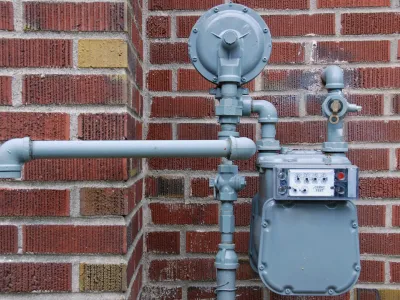PUC finalizes gas planning requirements and sets initial filing deadlines for three Minnesota utilities

In 2023, the Minnesota Public Utilities Commission (PUC) adopted CUB’s recommendation to require Minnesota’s three largest investor-owned gas utilities—Xcel, CenterPoint, and Minnesota Energy Resources Corporation (MERC)—to conduct integrated resource planning and submit their plans to the PUC for approval.
In integrated resource plan (IRPs), gas utilities will be required to analyze the best resources for meeting anticipated customer demand, including traditional gas as well as increased energy efficiency, electrification, and other options. The plans will be subject to review by stakeholders and the public and approval by the PUC.
For background, read CUB’s earlier blog discussing why the PUC chose to require IRPs and how they are an important regulatory tool for Minnesota.
Over the last year, CUB has worked with utilities and other stakeholders to provide recommendations to the Commission about what information should be included in utilities’ gas plans. On September 12, 2024, the PUC held its second—and final—hearing to establish those initial requirements and set deadlines for the three utilities to file their first plans.
What information will be included in the gas IRPs?
The PUC’s decision requires utilities to include high, medium, and low forecasts of future customer demand, as well as a forecast of their projected sales and greenhouse gas (GHG) emissions over the next 10 years. Utility IRPs must also include a preferred plan detailing which resources and projects the utility proposes to implement over the next five years to help meet its forecasted demand. Various resource types must be evaluated, including non-fuel options like geothermal, energy efficiency, and demand- response programs, which may provide more cost-effective and cleaner solutions to customers energy needs.
Critically, utilities will need to consider the state’s greenhouse gas goals in their planning. The Minnesota Legislature has set an economy-wide goal to reach net zero greenhouse gas emissions by 2050, and gas utilities must weigh the estimated lifecycle greenhouse gas emissions of each resource in their selection process. Under the PUC’s decision, utilities will need to account for the costs of environmental damages, and report available data on methane emissions both upstream and throughout their distribution system. Finally, each utility will need to provide a description of how its preferred plan will “support and serve” Minnesota’s greenhouse gas emissions reduction goals.
Another key component to gas IRPs is the Expansion Alternatives Analysis, or EAA. Under the PUC’s decision, each utility will be required to compile a list of all forecasted capacity expansion projects over a $1 million cost threshold for the next five years (with a maximum of ten projects). From that list, the utility must choose two to three projects and evaluate whether alternatives are available to satisfy the energy need, and avoid the otherwise costly and emissions-intensive investments in the gas system. As part of the EAA process, utilities must prioritize projects located in low-income and/or Environmental Justice communities so that residents in those areas can see direct benefits from those investments.
Finally, the Commission has required utilities to consider issues of equity throughout the gas IRP process. Utilities will be required to engage with communities impacted by proposed projects as they develop their plans, and will need to include a narrative description of how equity was considered in their filing.
What’s next?
Now that filing requirements are set, utilities will start to develop their initial plans over the next few years. Xcel is set to file its plan by July 1, 2026, followed by CenterPoint on July 1, 2027, and MERC on July 1, 2028. This staggered schedule will allow stakeholders, the PUC, and the public ample time to review each utility plan before the Commission ultimately makes its decision to approve, modify, or deny it.
As part of the utility planning process, the Commission has required utilities to facilitate robust stakeholder engagement including, at a minimum, relevant state agencies, clean energy advocates, consumer advocates like CUB, low-income and environmental justice advocates, organized labor, and businesses and communities that will be directly impacted or served by projects that undergo an EAA. Moreover, the utilities must provide a summary of their outreach activities with these and other interested parties to the Commission in its filed plan. There are also specific requirements for local government engagement, including that utilities must consider local climate goals and, where possible, coordinate with cities on existing infrastructure projects to reduce unnecessary costs borne by customers.
CUB intends to continue being an active participant in the stakeholder processes to represent consumer interests in the plan development, and will file comments with the Commission once the plans are filed and reviewed.